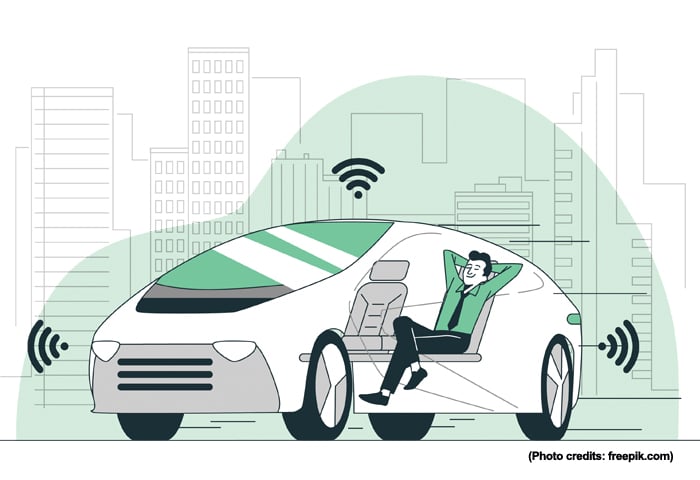How AI Powers Self-Driving Cars
Mia Wilson

Photo: How AI Powers Self-Driving Cars
How AI Powers Self-Driving Cars
Introduction: The Road to Autonomy
Self-driving cars are no longer a futuristic concept confined to science fiction. These advanced vehicles are already being tested on public roads and, in some cases, are available for limited commercial use. At the core of this transformative technology lies artificial intelligence (AI), which plays a crucial role in enabling cars to navigate roads, detect obstacles, and make real-time driving decisions. Understanding how AI powers self-driving cars helps demystify this revolutionary innovation and sheds light on its potential to reshape transportation.
The Background: Evolution of Self-Driving Cars
The idea of autonomous vehicles dates back to the mid-20th century, but it wasn't until the advent of modern AI techniques that significant progress was made. Early efforts in autonomous driving relied on rule-based systems, where engineers had to manually program every possible scenario a car might encounter. However, this approach proved to be impractical due to the vast number of variables in real-world driving conditions.
The breakthrough came with machine learning (ML), a subset of AI that enables systems to learn from data rather than being explicitly programmed. With ML, self-driving cars can process vast amounts of data from sensors and cameras to improve their driving performance over time. Companies like Tesla, Waymo, and Cruise have invested heavily in AI research to develop reliable self-driving systems, and today, these vehicles are equipped with highly sophisticated AI models.
How AI Enables Core Functions of Self-Driving Cars
1. Perception: Understanding the Environment
One of the primary tasks of AI in self-driving cars is perception the ability to understand and interpret the surrounding environment. To achieve this, AI relies on data from various sensors, including:
- Lidar: Uses laser beams to create a 3D map of the environment, helping the car detect objects and their distances.
- Cameras: Capture visual data for recognizing traffic signals, road signs, pedestrians, and other vehicles.
- Radar: Measures the speed and position of nearby objects, particularly useful for detecting vehicles in motion.
- Ultrasonic Sensors: Aid in close-range detection, such as parking assistance and obstacle avoidance.
AI algorithms process this sensor data to identify and classify objects, predict their movements, and make sense of complex road scenarios.
2. Localization: Knowing Where the Car Is
Localization refers to the ability of a self-driving car to determine its exact position on the road. This is achieved by combining GPS data with high-definition maps and sensor information. However, GPS alone is not precise enough for autonomous driving, so AI enhances localization by continuously comparing the car’s surroundings with pre-mapped data. This process ensures that the vehicle stays accurately positioned within its lane and navigates correctly through intersections.
3. Path Planning: Deciding Where to Go
Path planning involves determining the safest and most efficient route for the vehicle to follow. AI systems in self-driving cars generate a trajectory based on:
- Static obstacles: Permanent fixtures like buildings, curbs, and parked cars.
- Dynamic obstacles: Moving objects such as pedestrians, cyclists, and other vehicles.
- Traffic rules: Speed limits, stop signs, and right-of-way regulations.
The AI continuously updates the path in real-time, allowing the car to adapt to changing road conditions and unexpected events.
4. Control: Executing Driving Actions
Once a path is planned, the control system takes over to execute driving actions such as steering, accelerating, and braking. AI algorithms ensure smooth and safe maneuvering by constantly adjusting these actions based on the current environment and the planned trajectory. This control system is crucial for maintaining passenger comfort and ensuring compliance with traffic laws.
Deep Learning and Neural Networks in Self-Driving Cars
A key component of AI in self-driving technology is deep learning, a type of machine learning that uses neural networks modeled after the human brain. Deep learning allows self-driving cars to recognize patterns in data and make predictions. For example, convolutional neural networks (CNNs) are used for image recognition tasks, enabling the car to identify road signs, traffic lights, and pedestrians.
Reinforcement learning, another subset of AI, helps the car learn optimal driving strategies through trial and error. By simulating countless driving scenarios, the AI system can develop strategies for handling rare or difficult situations, such as navigating in heavy rain or snow.
The Role of Big Data in Self-Driving AI
AI models in self-driving cars are trained on vast datasets collected from millions of miles driven by test vehicles. This data includes:
- Visual data: Images and videos from cameras.
- Sensor readings: Lidar, radar, and ultrasonic data.
- Driving patterns: Information on how human drivers react in various situations.
By analyzing this data, AI systems can improve their accuracy and reliability. Furthermore, real-world driving data is continuously fed back into the system, allowing for ongoing learning and improvement.
Challenges and Ethical Considerations
While AI has made remarkable progress in powering self-driving cars, significant challenges remain. These include:
- Safety: Ensuring that self-driving cars can handle all possible driving scenarios without causing accidents.
- Regulation: Developing laws and guidelines for the safe deployment of autonomous vehicles on public roads.
- Ethical dilemmas: Programming AI to make ethical decisions in situations where harm is unavoidable.
Addressing these challenges requires collaboration between AI researchers, automotive manufacturers, policymakers, and the public.
Conclusion: A Future Driven by AI
AI is undeniably the driving force behind the development of self-driving cars. From perception and localization to path planning and control, AI enables these vehicles to navigate complex environments safely and efficiently. Although challenges remain, ongoing advancements in AI and machine learning are bringing us closer to a future where self-driving cars become a common sight on our roads. As this technology continues to evolve, it holds the promise of safer, more efficient, and more accessible transportation for all.
For You
View AllLearn how globalization impacts economies worldwide, from trade to employment. Click for a balanced analysis!
Mia Wilson
Learn how to create a nutritious meal plan that supports your health goals. Start planning your balanced diet today! Get started now.
Mia Wilson
Discover how usage-based insurance works and how it can save you money. Learn tips for smarter, personalized coverage today!
Mia Wilson
Discover the top performance car brands that dominate the market with speed, style, and innovation. Find your dream car now!
Mia Wilson
Explore the basics of environmental economics and how it links the economy to sustainability. Click to learn key insights!
Mia Wilson
Discover the incredible benefits of solo travel. From personal growth to ultimate freedom, find out why going solo is life-changing!
Mia Wilson
Health










Education
View All
May 16, 2025
What Does PLC Stand for in Education?
Explore what PLCs are, their role in professional learning, and how they improve teaching outcomes. Learn more now!

May 19, 2025
What Is Tertiary Education?
Understand tertiary education, its levels, and how it prepares students for advanced careers. Explore your options now!

May 12, 2025
Where Does the US Rank in Education?
Explore the US education ranking globally, factors influencing its position, and what it means for the future. Get insights now!





